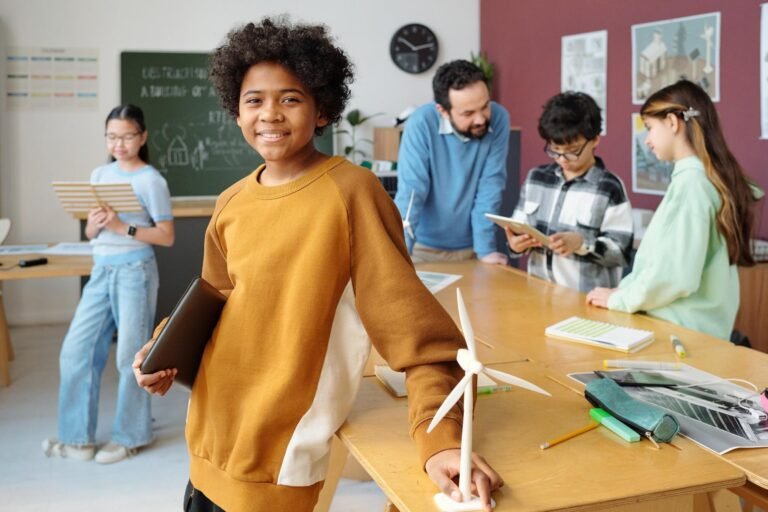
Is 2e on the autism spectrum refers to individuals who are twice-exceptional, often gifted with learning challenges, some of whom may also be diagnosed with autism, highlighting an overlap but distinct differences between 2e and autism spectrum disorder.
Is 2e on the autism spectrum? Many wonder if twice-exceptional individuals share autism traits or stand apart. Curious about their differences and similarities? Let’s unpack this nuanced topic together.
Defining 2e and its characteristics
Twice-exceptional, or 2e, refers to individuals who are identified as gifted or talented while also facing a learning disability, neurodivergence, or similar challenges. These individuals often show high ability in some areas, such as academics or creativity, yet struggle in others due to their unique cognitive profiles.
Characteristics of 2e individuals include advanced problem-solving skills, creativity, and curiosity. However, they may also experience difficulties with attention, processing speed, or social interactions. This mix can make it challenging to recognize both their talents and their needs, leading to misunderstandings in school and other environments.
Understanding 2e means appreciating this duality. It highlights the need for specialized educational approaches that nurture strengths while supporting challenges. For example, a 2e student may excel in math but require help with organization and focus.
Identifying 2e traits early enables tailored support, helping these individuals thrive by leveraging their gifts and managing their difficulties effectively. Awareness and appropriate accommodations are key to unlocking their full potential.
Key traits of autism spectrum disorder
Autism Spectrum Disorder (ASD) is a developmental condition that affects communication, behavior, and social interaction. People with autism may display a wide range of traits, which can vary in severity and combination.
Common traits of autism include difficulties in social communication, such as challenges with understanding gestures, facial expressions, or tone of voice. Many individuals with ASD prefer routines and may become distressed with sudden changes.
Other key features include repetitive behaviors like hand-flapping or repeating phrases. Sensory sensitivities are also frequent, where sounds, lights, or textures can feel overwhelming.
Language abilities can differ widely; some may be nonverbal, while others have sophisticated vocabularies but struggle with conversational skills. Understanding these traits helps create awareness and supports tailored interventions.
How 2e and autism spectrum overlap and differ
Both twice-exceptional (2e) individuals and those on the autism spectrum can share overlapping traits, but there are distinct differences. 2e individuals are gifted learners who also face challenges such as learning disabilities or neurodevelopmental issues, including but not limited to autism. Meanwhile, autism spectrum disorder (ASD) covers a range of neurodevelopmental variations, primarily characterized by social communication difficulties and repetitive behaviors.
Overlap occurs as some 2e individuals may also be diagnosed with autism, combining high intellectual abilities with autism-related traits. This creates a unique profile where strengths in creativity or academics coexist with sensory sensitivities or social challenges.
Differences lie mainly in focus and diagnosis: not all 2e individuals are autistic, and not all autistic individuals are considered twice-exceptional. 2e emphasizes giftedness plus disability, while autism centers on social, communication, and behavioral traits.
Recognizing both the similarities and distinctions is important for tailored educational plans and support. Understanding these helps families, educators, and professionals provide the right environment to nurture strengths and address challenges effectively.
Understanding 2e and Autism Spectrum is Key
Knowing how twice-exceptional (2e) individuals and those on the autism spectrum both overlap and differ helps provide better support.
Each person has unique strengths and challenges that need attention. By recognizing their specific needs, families and educators can create environments that help these individuals thrive.
Awareness and tailored support open doors to success, making a positive difference in learning and life.
FAQ – Understanding 2e and Autism Spectrum
What does twice-exceptional (2e) mean?
2e refers to individuals who are gifted but also have learning disabilities or neurodevelopmental challenges.
Can a person be both 2e and on the autism spectrum?
Yes, some 2e individuals are also diagnosed with autism, combining high abilities with autism traits.
What are common traits of autism spectrum disorder?
Common traits include social communication difficulties, repetitive behaviors, and sensory sensitivities.
How is 2e different from autism spectrum disorder?
2e highlights giftedness alongside disabilities, while autism primarily focuses on social, communication, and behavioral features.
Why is it important to recognize the overlap between 2e and autism?
Recognizing overlap helps tailor educational support and interventions that meet each individual’s unique needs.
How can educators support 2e and autistic students effectively?
By understanding their strengths and challenges, educators can provide accommodations and environments that foster growth and learning.

A certified Heal Your Life® Coach with 20+ years in education and emotional development. Supports gifted teens in navigating anxiety, perfectionism, and identity challenges, while equipping parents with practical tools for lasting transformation. Sessions blend emotional healing, mindset mastery, and strategic empowerment.



